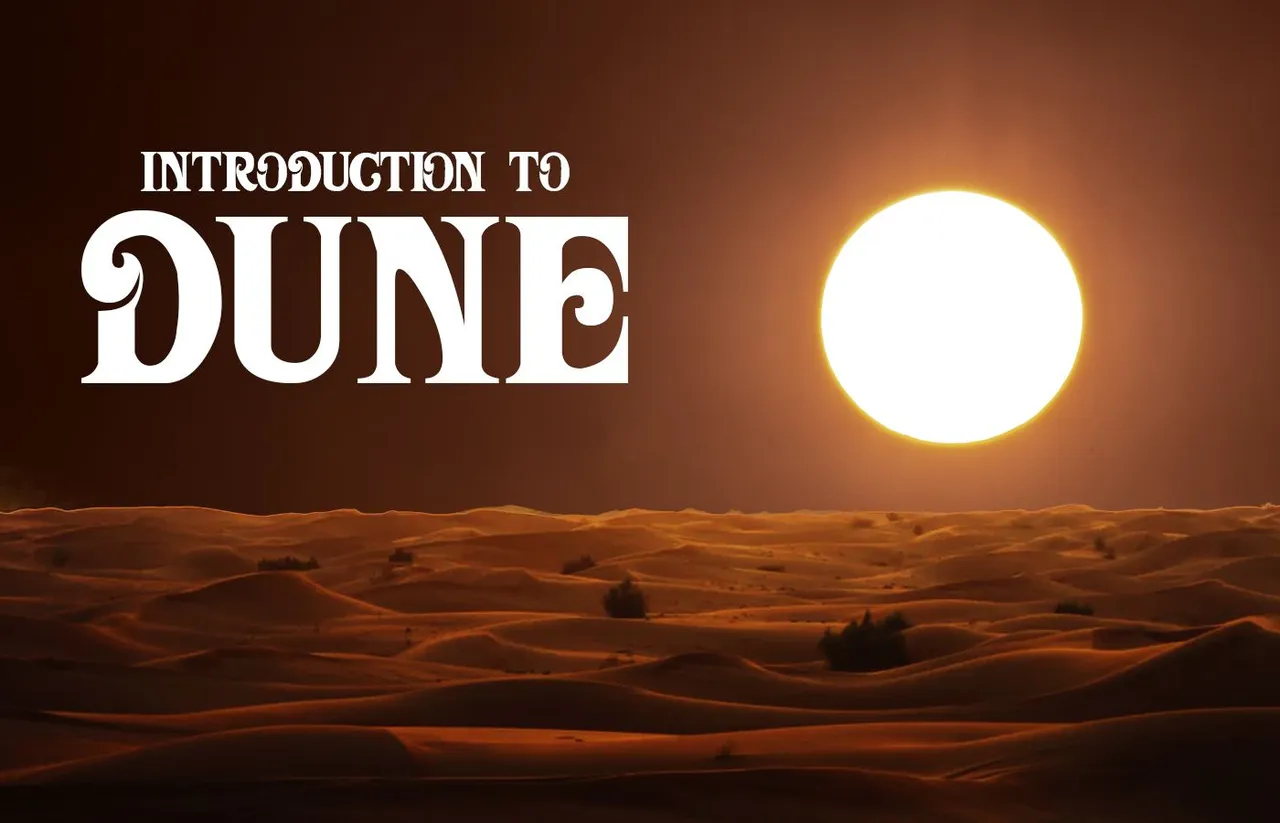
Hey, guys! I promised to start a series of posts on this masterpiece, and I'll begin with a simple introductory overview. I read "Dune" for the first time last year and almost immediately reread it, something I'd never done before with any literary series, let alone one this long. It was an amazing, wonderfully profound experience that I'm taking to a new level as I write these posts, because I'm currently rereading it a third time so as to provide as thorough an analysis as I can, taking advantage of the hype for Denis Villeneuve's adaptation. Therefore, it's important to note that these publications will be full of spoilers. I will also add some concept art I've been working on, nothing too fancy for now, but I'll expand it as I write these publications. The original series by Frank Herbert comprises six novels: Dune, Dune Messiah, Children of Dune, God Emperor of Dune, Heretics of Dune and Chapterhouse: Dune. Another series, written by Brian Herbert and Kevin Anderson, narrates the events preceding the original saga and expands on some of its characters and elements, but I have yet to read it, so I'll use only the information given in the first.
Setting and Factions
The story begins some 20,000 years after the current age, in a time when humanity has spread across the known Universe well beyond the Milky Way, thanks to great technological advancement (with a catch) and the general use of a highly addictive psychedelic substance known as Spice Melange, geriatric spice or merely spice, which is only available in a desert planet called Arrakis AKA Dune.
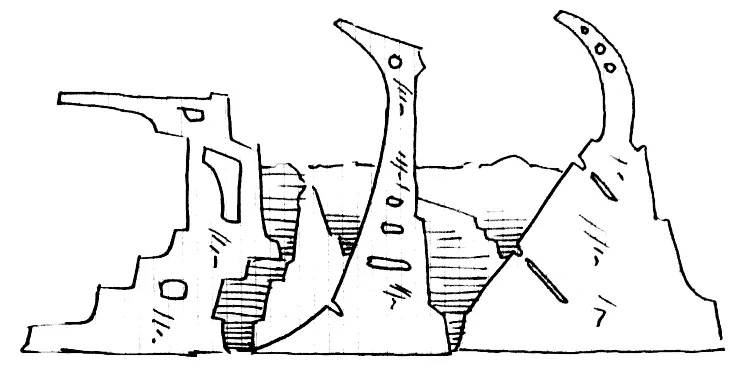
The entirety of mankind lives under a single Imperium with a feudal class system known as the Feufreluches, composed of Minor and Great Houses each governing its own planet, and loosely kept together by the Emperor and the Landsraad, the Council of Great Houses that balances the Emperor and its supporters. Another institution, the Combined Honnete Ober Advancer Mercantiles (CHOAM Company), controls all financial affairs of the Imperium. This setting is extremely hostile and the Houses are constantly vying for Imperial favor, CHOAM dictatorships (economic contracts that constitute the actual evidence of political clout in the cosmos) and a seat in the Landsraad, through whatever means they see fit, including assassination and war. Hence, to avoid potentially decimating conflicts, the fragile peace of the Feufreluches is protected by a longstanding nuclear deterrent treaty called the Great Convention that keeps Houses from blowing each other apart with atomic weapons, since any one House that uses them faces retaliation from all other Houses combined. As a way of resolving disputes, the Landsraad presides over the process of formal vendetta called kanly, "sworn enemy" in Turkish.
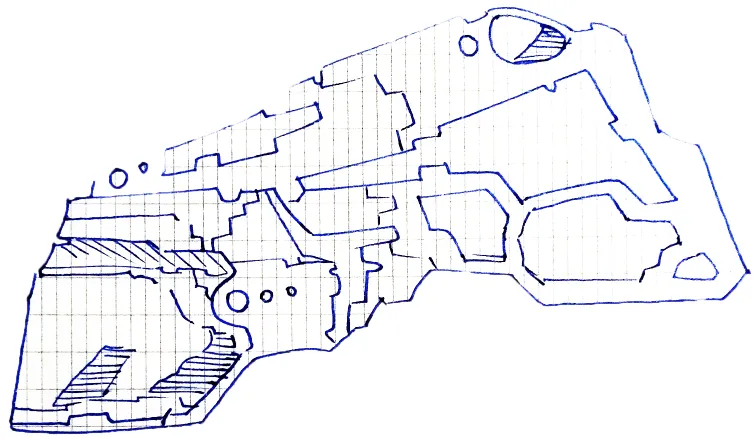
There are several Houses, but the only relevant ones in the novels are the Corrino, the Imperial House, led by the Padishah Emperor Shaddam IV; the Harkonnen, a clan of sadistic, hedonistic slave masters, led by the morbidly obese Baron Vladimir Harkonnen; and the Atreides, led by Duke Leto Atreides, whose ancestry goes all the way back to Agamemnon, King of Mycenae in Ancient Greece, and who uphold a strict code of loyalty that allow them to inspire near-fanatical devotion in others. The Harkonnen and the Atreides are the very definition of kanly, and their enmity kicks off the whole story. One Minor House, the Fenring, also has some relevance in the first book.
Aside from these entities, there are other institutions that, although part of the Imperium, don't answer to any authority but themselves and have influence well beyond imperial rule:

The Spacing Guild is the organization that makes space travel possible at the beginning of the story. Their monstrous navigators, humanoid but deformed creatures who must live out their lives in huge tanks filled with melange, are the only beings capable of using the foresight provided by the substance to discover safe pathways between two points of the Universe, allowing for instant transportation through the folding of spacetime. Thanks to this monopoly, they have the ultimate say on who and what moves between star systems, making CHOAM and everyone else dependent on them.
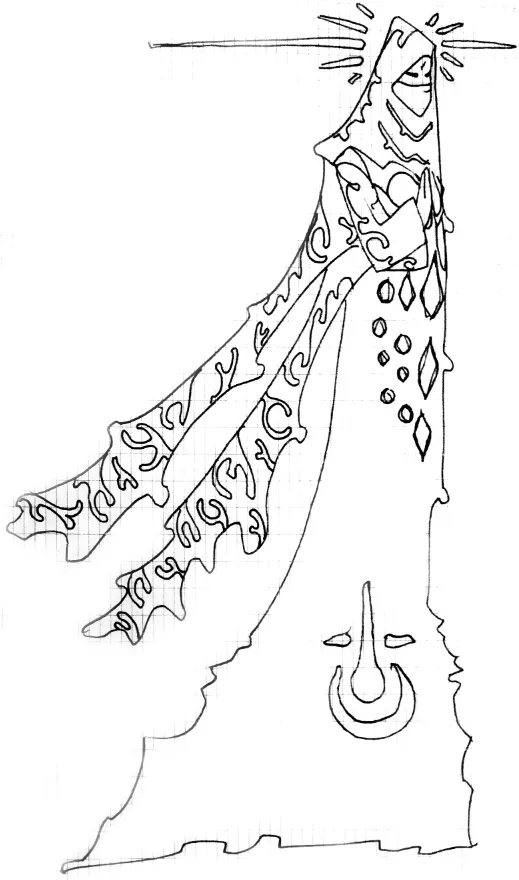
The Ixians are technocrats responsible for wondrous inventions, explored only summarily through the perspectives of others. The catch regarding technology that I mentioned above applies primarily to them. Long before the events of the series, humanity was enslaved by machines of their own making, prompting the onset of the Butlerian Jihad, a massive revolt against artificial intelligence which first destroyed sentient machines and then imposed a prohibition on creating them. Like the Great Convention, the commandments of the Butlerian Jihad are a passive restriction and Ix is very careful not to (openly) violate them. Due to this prohibition, the power brokers in the Universe employ the services of Mentats, humans trained to operate like extremely sophisticated computers when required.
The Bene Gesserit is a sisterhood of exceedingly skilled bureaucrats that eventually becomes the most important organization of the narrative. These women are strictly trained in emotional and physical control, self-awareness and the detailed observation of their environment, which grants them abilities that are deemed sorcerous by others, such as the capacity to master people through the use of specific voice pitches, perfectly detecting lies and ingesting poisons without harm, earning them the misnomer of witches. Through centuries of careful manipulations and breeding schemes, they're established in almost every planet and are responsible for the genetic making of all Houses. They also have a long-term system of fail-safes called the Missionaria Protectiva, which essentially implants religious beliefs and superstitions to favor their members and keep them from harm even in unknown planets.

Another faction, indivisible from the Atreides, are the Fremen, the semi-nomadic inhabitants of Arrakis, perfectly adapted to its unforgiving environment and biologically primed across generations for the effective metabolization of spice, an essential staple of their diet. They have their own technology centered around the collection and conservation of moisture. They wear special suits that almost perfectly recycle the body's moisture even from feces and urine. Their bases of operation, called sietches, contain water reservoirs connected to wind traps that condense air moisture on the surface, and they liquefy their dead, draining every ounce of water from the corpses, for each Fremen owns their flesh but their water belongs to the tribe. When the Atreides move to Arrakis, they immediately establish contact and find common cause with the Fremen, realizing that their level of discipline and fighting prowess are unparalleled, and that they can ride sandworms with ease. So little is known about the Fremen in the Imperium that not even the Bene Gesserit are fully aware of their numbers and customs until Paul Muad'Dib Atreides, the protagonist of the first two novels and a central figure throughout the narrative, becomes their leader and prophet.
Subsequent novels introduce more groups with unique motivations, cultural identities and practices, such as the Bene Tleilax or Tleilaxu and the Fish Speakers.
The Sandworms and the Spice
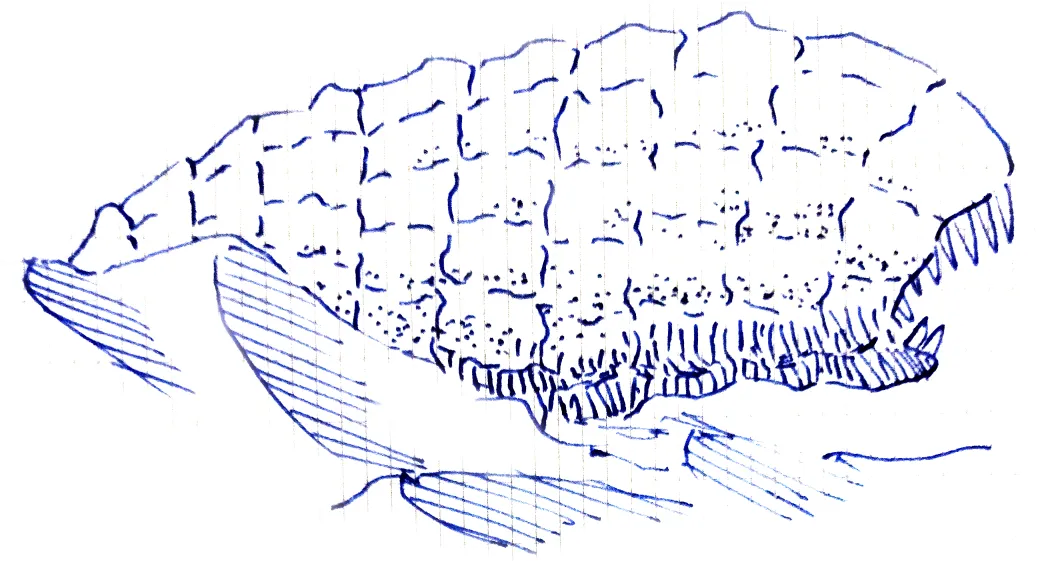
Arrakis is the home of colossal, fiercely territorial worms that live under the surface of the planet and are extremely sensitive to vibrations above. In order to avoid alerting them, Fremen have developed an uneven pace to walk in the desert, thus producing disturbances that could be caused by anything, from an insect to a sliding rock. They also use the worms' sensitivity to their advantage by planting vibrating devices called thumpers, which draw them to a location of their choosing.
The worms, also known as Makers, Shai-Hulud or Shaitan, are in effect living factories whose furnace-like innards constantly transform sand and any other kind of matter they consume into Spice Melange, with oxygen as a byproduct. These behemoths are proven to be up to 400 m (1,300 ft) long and 40 m (150 ft) in diameter, but there's one instance of a worm apparently over 2.4 km (1.5 miles) in length. They're composed of many ringed segments, each an individual living organism, covered with a thick carapace made up of interlocking, overlapping plates of a tremendously durable material impervious to most types of damage. Under this protection, the worm's flesh is soft and highly irritable, so in order to avoid sand abrasion when two plates are pried apart, the worm will roll the affected area away from the sand and lift itself to minimize contact with the dunes, a fact that Fremen also learned to exploit this by using special hooks to split the plates apart and thus use the worm into a mount. They also harvest the worm's long, glistening teeth to craft their deadly crysknives, blades of surpassing beauty used in both ceremony and combat.
Spice is the most valuable substance in the Universe and mining it requires facing these predators, a feat that requires constant observation of the sands for signs of their approach (wormsigns). Although the precise process by which the worms produce the Spice is left unexplained in the original saga, the biological association between them is a central part of the narrative.
Structure, Themes and Personal Significance
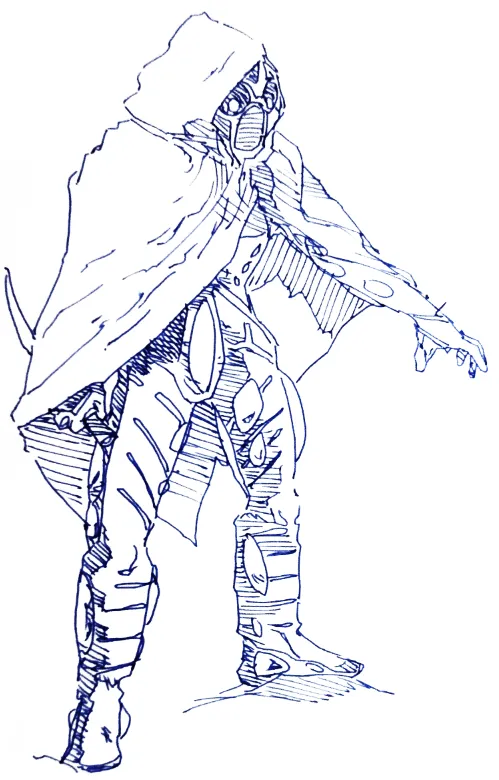
"Dune" is the most detailed, exquisitely narrated story I've ever read, and I say that as a Tolkien fan. At its deepest level, it explores the nature of time, consciousness, the extent of human potential and the constant contrast between mankind's outspoken desire for peace and stability common in all stages of civilization, and the inexorability of chaos and change. The books present the story in a linear fashion without flashbacks or the interplay of different moments in time, but there are often considerable leaps between chapters and novels that may span years, decades and even millennia, where events are left in obscurity for the reader to fill in the gaps. The characters and the Universe at large experience significant development during these periods.
Each chapter begins with a quote spoken by a character or extracted from one of the many fictional books and philosophies within the narrative. These quotes set the stage for the happenings of the chapter and offer profound insights on many subjects such as Free Will, Fate, Spirituality, Power, Politics, Religion, War and Mysticism, among others. Although Herbert sticks to a particular storytelling style approaching stream of consciousness, where the actions, thoughts and feelings of relevant individuals are described in unison, each book has noticeable changes in flow and pace that make it stand out on its own.
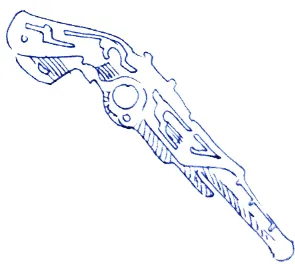
Melange causes such a strong dependence that it must be consumed daily as withdrawal means death, but it provides great longevity, heightens the senses and vastly expands human capabilities by inducing and sustaining remarkable levels of focus and self-awareness which, coupled with the characters' intense training, fuel descriptions that provide a wealth of information interwoven in a tapestry of unique complexity
The depth of this saga is such that there are parts of it that I'm only getting now, with this second reread. By comparing them with what I've seen and felt in my own journey of inner exploration, I've gained many important insights that have broadened and amplified my understanding about reality and self-awareness. This is an inspiring masterpiece filled with wisdom of the highest order and I encourage you to get it physically or digitally, and to read it slowly, with as much attention as you can muster.
I don't really know how this huge project I'm embarking on is going to pan out, so I'll just play it by ear. My basic approach would be to summarize each chapter, highlighting important details and connections as I move along, but as with the artwork that you see here, this may change with progress. I hope you find these analyses engaging and useful. Thank you for reading!
I'm the author of the images in this post. The font I used for the cover is a replica of the typeface of the classic novels, created by DuneFishUK.
